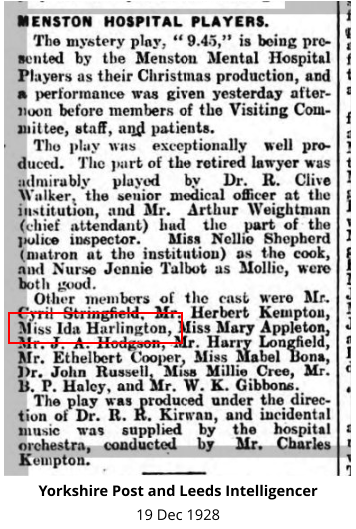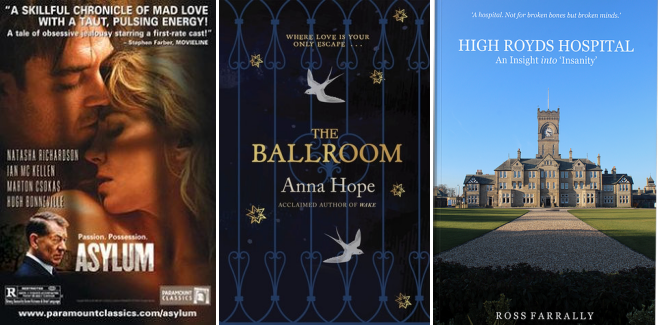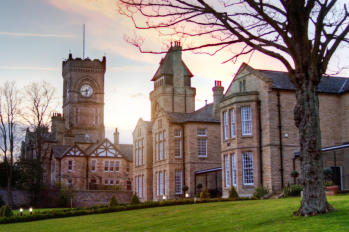James Harlington (1869 - 1931)
James Harlington was the seventh child (and fourth son) of James and Hannah Harlington. In the family of eight siblings Alma Harlington was the
eldest.
In 1881 James, aged 12, was living with his parents and 3 siblings in 55 Back South St, Goole but before the 1891 Census he married Sarah Ann Powell.
The 1891 Census shows the couple living in St Andrews Terrace, Hook, Goole. James worked as a Shipsmith and Sarah Ann as a Dressmaker.
In the 1901 Census they were living at 42 Marlborough Avenue, Goole. They had two children, John (b 5 Nov 1896) and Ida (b 1 Dec 1899). A third child
May was born on 26 May 1901 just a few weeks after the Census.
The 1911 Census shows most of the family living at 51 Adeline St, Goole though Ida was staying with her grandparents (John and Mary Ann Powell) at
57 Jackson St, Goole for some reason. The 1911 Census reveals that James and Sarah Ann Harlington had had 4 children born alive but that only three
were still alive. In all three censuses James’ occupation is given as Shipsmith.
Interestingly, daughters Ida and May Harlington turn up in the 1939 Register living at 69 Leathley
Crescent, Menston, Ilkley U.D., Yorkshire (West Riding). They are both unmarried and both working
as Mental Nurses at Menston Mental Hospital, a psychiatric hospital south of the village of
Menston, West Yorkshire. The hospital, which opened in 1888, was originally known as the West
Riding Pauper Lunatic Asylum Menston, before eventually gaining the title 'High Royds Psychiatric
Hospital' in 1963. It closed in 2003 and the site has since been developed for residential use. The
hospital was intended to be largely self-sufficient, and had its own library, surgery, dispensary,
butchery, dairies, bakery, shop, upholsters’ and cobbler's workshops and a large estate partly
devoted to agriculture and market gardening. The patients lived in wards and if they were able,
were expected to work towards their keep either on the farm, in the kitchens or laundry, or in
various handicraft facilities. The hospital was formerly connected to the Wharfedale railway line by
its own small railway system, the High Royds Hospital Railway, but this was closed in 1951. Since its
closure, the site has been used as a film set for films, TV series and documentaries. There have been
books written about it and a novel set there; as well as it providing the inspiration for songs and
album titles.











